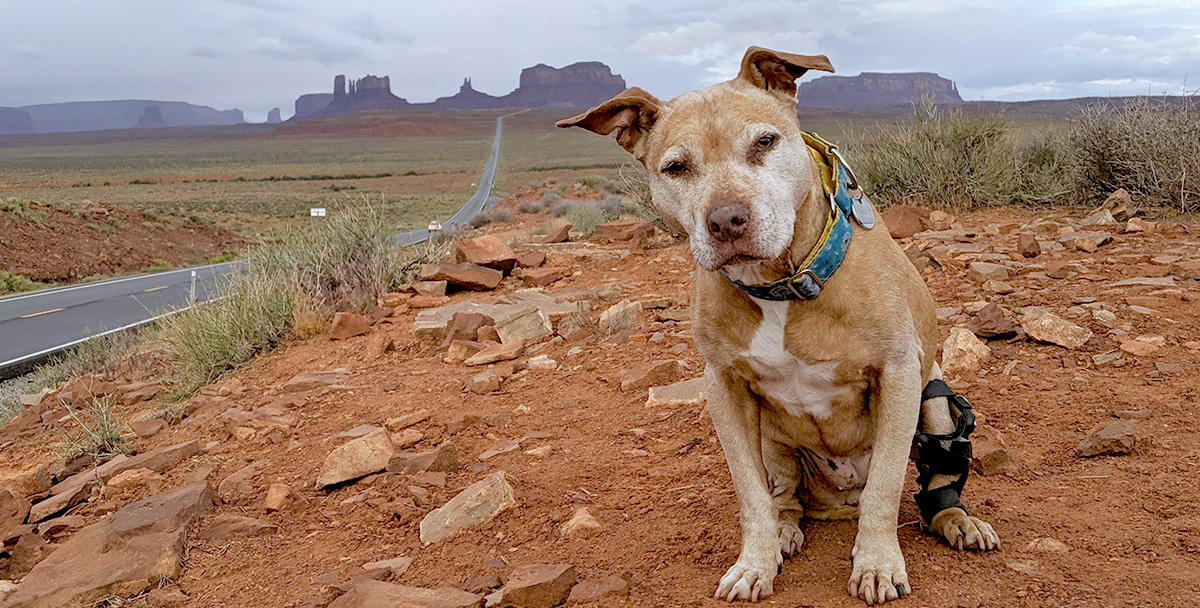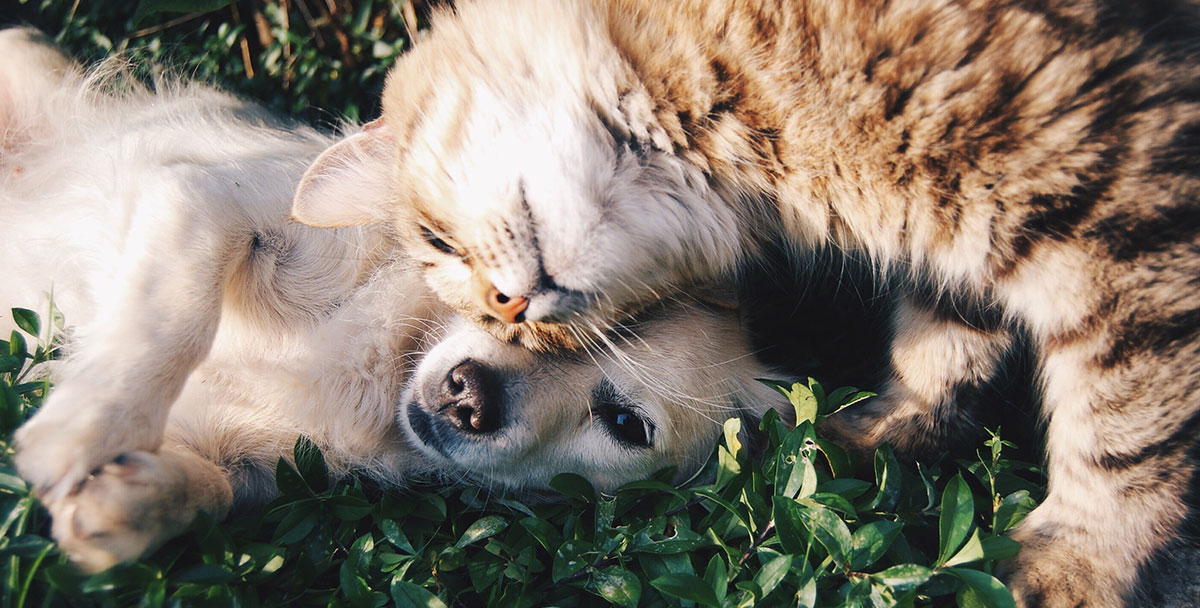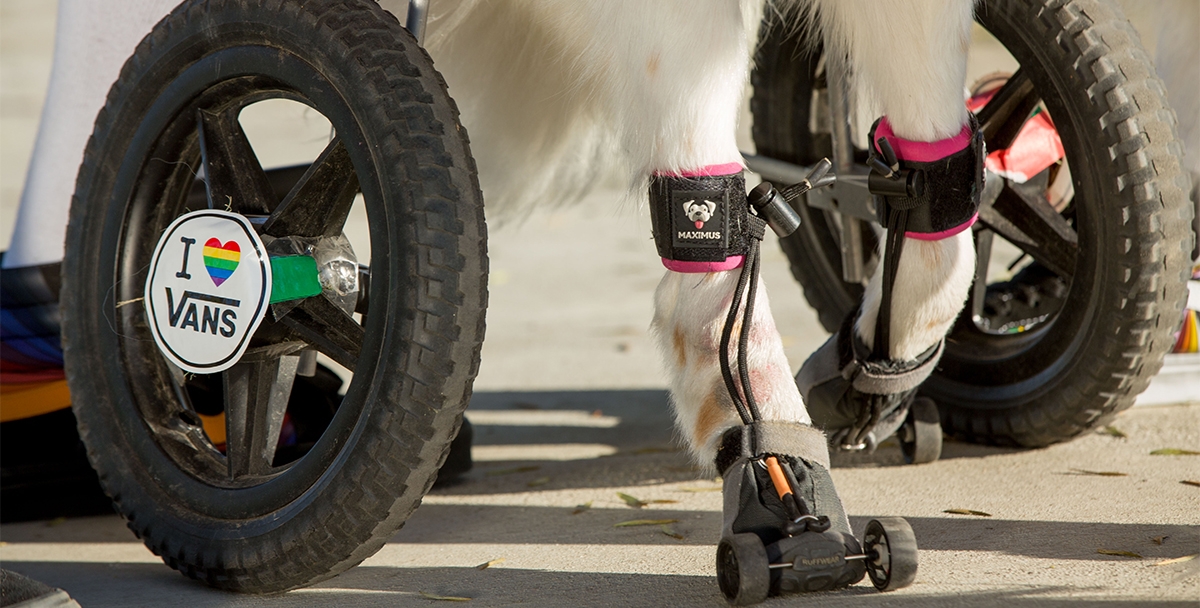At the end of every year, I make a list of “best” moments. I review my journal, then jot down times when I felt particularly happy, clear, connected. Last time I did this, I came away with 25 or so items, two capturing the exact same event – a day when I skipped out to run at Shelburne Farms with my dog, a 2-year-old golden/lab/pit/beagle rescue named Yo Biden.
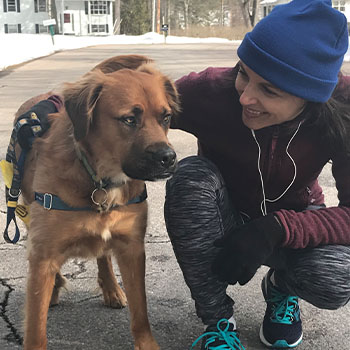
It’s not surprising this experience brought such joy that I’d unintentionally written it down twice. It is a beautiful setting: fields, lake, mountains, trees. Running clears my head, and Biden is a sweet friend with whom I love spending time. It feels good to give him one-on-one attention, so difficult to carve out in a family with two working adults and two school-aged boys.
If Biden were to go through his best moments, would our runs rank as high? Quite possibly. “Dogs love doing anything with their humans,” says Dr. Gary Weitzman, president and CEO of the San Diego Humane Society and author of National Geographic Complete Guide to Pet Health, Behavior, and Happiness. And favorite activity or not, running is healthy for dogs – for all the same reasons it’s good for people. “It builds muscle strength and endurance and helps them get the jollies out,” says Dr. Meredith Meyer, a veterinarian in Cincinnati, Ohio. (“Jollies” perhaps otherwise channeled into chewing furniture and barking incessantly.)
But there’s more to consider than just strapping on a leash and sprinting off. Before you and your pup become running partners, take note of these tips and, of course, talk to your vet, who can speak specifically to the needs of your best bud.
Size up your canine companion
First off, you shouldn’t run with puppies until their joints can handle the impact, around age one. From there, “breeds like vizslas, Weimaraners, and German shorthaired pointers – with short hair, athletic bodies and longer legs – tend to do well on all sorts of runs,” says Bryan Barrera, founder of D.C. Dog Runner, a dog-running service in Washington, D.C. On the flip side, some breeds, such as shepherds, which tend toward hip issues, are susceptible to injuries. Other breeds are prone to overheating due to thick fur (think: huskies) or short faces (bulldogs, Shih Tzus, pugs) that make it harder to move air. Dogs cool themselves by panting; they don’t sweat.
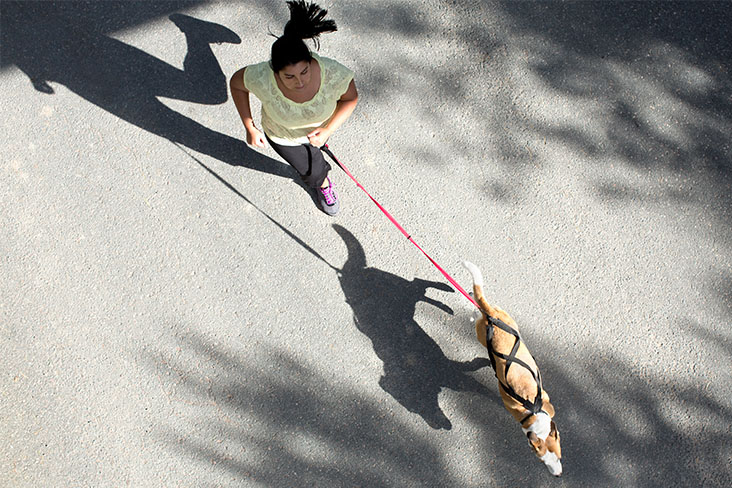
Consider that your dog might not like to run – or to run on your terms, says Meyer. When I told her how Biden has, on occasion, refused to jog alongside me, seemingly for no other reason than not wanting to, she guessed it came from his bits of beagle. Apparently, it can be a headstrong breed. (See “When Running’s No Fun” sidebar below for alternate exercise ideas.)
Start slow
“Start with short distances and increase weekly,” Weitzman says. If you’re, say, marathon training, a dog in good health should be able to work up to even those long runs – there isn’t a strict rule on max mileage, Weitzman says. Just stop if your dog is panting heavily or looks distressed. On every run, warm up and cool down with a short walk to reduce stress on joints. Warmups also give Biden time to sniff around and pee on things; when we start running, he’s ready.
Consider the conditions
Avoid runs when it’s hotter than 85 degrees Fahrenheit, and proceed with caution when it’s above 70, particularly when it’s humid. Beyond the fact that panting is the only way dogs can regulate body heat, they’re warmer than we are (about 101 degrees) before the run even starts, says Weitzman. Keep warm-weather sessions under 30 minutes, and bring water and a collapsible bowl. On the flip side, the level of cold that dogs will tolerate depends on their fur’s thickness and what they’re used to. When temps dip below 45 degrees, a miniature poodle may balk at going outdoors, “but you may have a hard time getting a hairy husky inside,” Meyer says. Living in chilly Vermont, Biden (who has furrier breeds in his blood) and I happily run a few miles in 25-degree temps.
Get the right gear
Use a harness instead of a collar, which puts strain on the neck and may cut off your dog’s airway. If your dog pulls, try a front-sensation harness, which applies gentle pressure on their chest, drawing them closer to you. Never use a head harness, because it can keep a dog’s mouth closed. (Remember, panting.) Barrera also advises against retractable leashes. “If something startles the pup when there is a lot of slack in the line, they have a lot of distance to build to full speed,” says Barrera. “The leash will be ripped from your hand, you will be pulled over, or they’ll hurt your shoulder. Maybe all three.”
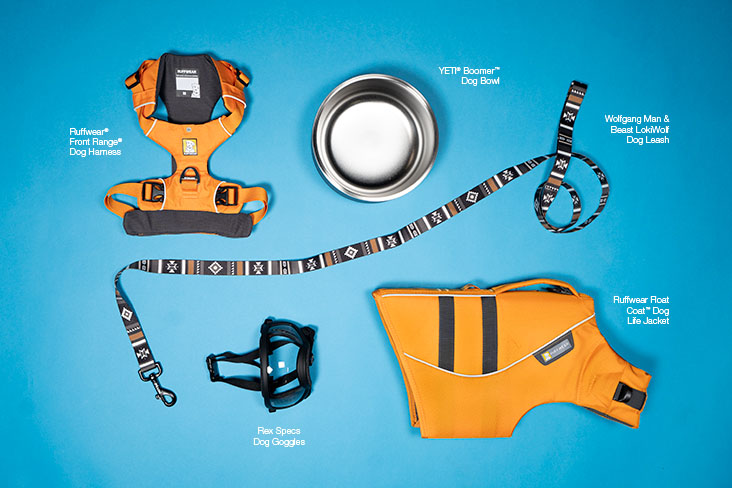
For more on our REI dog gear picks, visit subarudrive.com/REIdoggear.
Protect their paws
Biden and I often drive a few miles to our favorite off-road paths at the farm or by the bay. Pavement can be rough on paws (and joints) and, when it’s hot, can burn paw pads. In winter, road salt and ice can injure paws. “If your buddy is tolerant, boots can be helpful,” says Meyer. “If not, a product such as Musher’s Secret Paw Protection Wax can help protect against salt and ice.”
Be the (reasonable) leader
“I don’t have any hard rules about a pup running out front, beside or back behind me,” says Barrera. “I want them to find the spot they feel best while still understanding the human is in charge.” That means breaking bad habits, such as racing ahead, by holding your dog back until they stop.
Pay attention to your partner
With a canine running pal, all hey, dude, I’m dying here type of communication is nonverbal. “A lagging and panting dog behind you is a sure sign it’s time to head home,” says Weitzman. Tuning in to these early markers of fatigue means you can stop well before things get dire, but it’s good to educate yourself on the signs of heat stress: heavy panting, glazed eyes, a rapid pulse, a staggering gait or a deep red tongue. If you believe your pet is suffering from heat exhaustion, take them to an emergency vet clinic immediately. Or, if your dog is limping after a run, get things checked out. “We want you and your pet to remain exercise partners as long as possible,” Meyer says. Yes! Keeping Biden as a running buddy for years to come also depends on my treating him with the respect I show my other partners – I mean, I don’t drag my friend Jen by the neck when she says she doesn’t want to run. So I give him a pass when he tells me – with that soulful, stubborn stare – that we’re not running anywhere right now.

